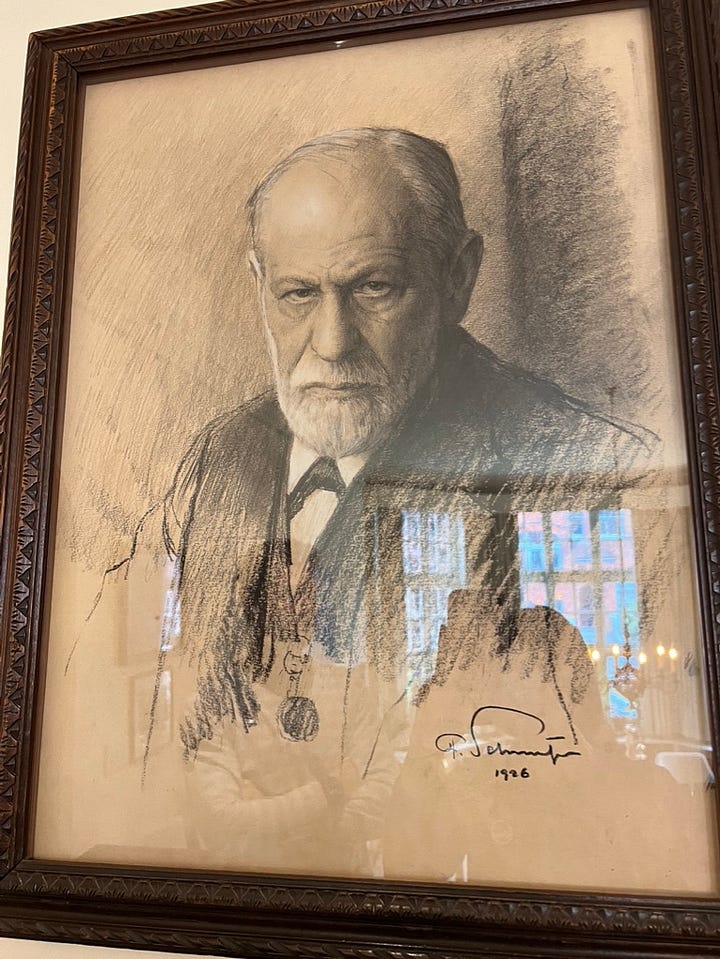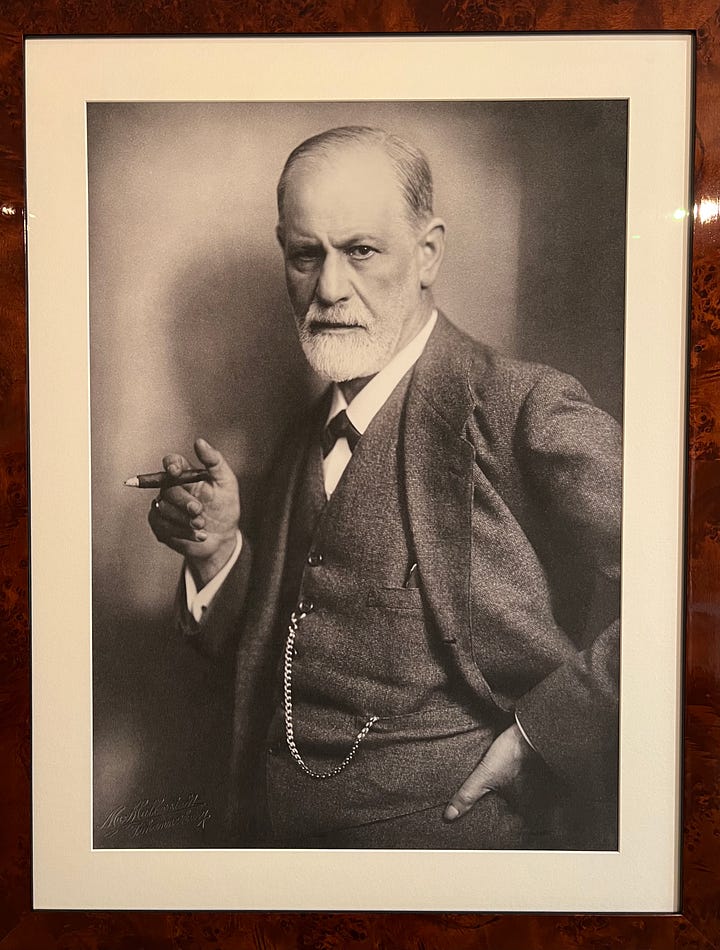I just returned home to the United States from London, where I had the opportunity to visit legendary neurologist and founder of psychoanalysis, Sigmund Freud's home which has been turned into a museum, thanks to his daughter Anna Freud's wishes upon her death in 1982.
Sigmund Freud's penned his seminal paper On Narcissism, written over a century ago in 1914. Credit for coining the term narcissism is usually given to Paul Adolf Näcke (1851-1913), a German psychiatrist and criminologist, though Havelock Ellis, an English physician, used the term narcissus-like a year prior in 1898 as a description of a psychological attitude. In 1899, Näcke introduced the Czech term Narcismus to describe a sexual perversion.
Freud only published this single paper exclusively devoted to narcissism, though the significance of this breakout paper was profound. On Narcissism established many of the contours of psychoanalytic theory. Amongst many critical insights to be gleaned from his paper, Freud posited that externally facing love mitigated against malignant self-love, i.e., pathological narcissism. He makes a distinction between two types of libido — ego-libido (self) and object-libido (other).
A strong egoism is a protection against falling ill, but in the last resort we must begin to love in order not to fall ill, and we are bound to fall ill if, in consequence of frustration, we are unable to love.
He continues that when a person emotionally invests in another person (object-cathexis), it is healthy because it doesn't inflate your ego, i.e., “raise self-regard”. The ego is strong, functioning as a negotiating intermediary between the id and the super- ego, yet is not inflated or grandiose. To love is humbling, and to whatever extent one loves is to the extent that their tendency towards pathological narcissism is reduced. Love is inversely correlated to pathological narcissism.
Further, it is easy to observe that libidinal object-cathexis does not raise self-regard. The effect of dependence upon the loved object is to lower that feeling: a person in love is humble. A person who loves has, so to speak, forfeited a part of his narcissism, and it can only be replaced by his being loved.
Primary Narcissism
Freud suggested that exclusive self-love might not be as abnormal as previously thought and might even be a common component in the human psyche. He argued that narcissism “is the libidinal complement to the egoism of the instinct of self-preservation,” or, more simply, the desire and energy that drives one’s instinct to survive. He referred to this as primary narcissism.[16]
According to Freud, people are born without a sense of themselves as individuals, or ego. The ego develops during infancy and the early part of childhood, only when the outside world, usually in the form of parental controls and expectations, intrudes upon primary narcissism, teaching the individual about the nature and standards of his social environment from which he can form the ideal ego, an image of the perfect self towards which the ego should aspire. “As it evolved, the ego distanced itself from primary narcissism, formed an ego-ideal, and proceeded to cathect objects”.[18]
Freud regarded all libidinous drives as fundamentally sexual and suggested that ego libido (libido directed inwards to the self) cannot always be clearly distinguished from object-libido (libido directed to persons or objects outside oneself).
Secondary Narcissism
According to Freud, secondary narcissism occurs when the libido withdraws from objects outside the self, above all the mother, producing a relationship to social reality that includes the potential for megalomania. “This megalomania has no doubt come into being at the expense of object-libido. This leads us to look upon the narcissism which arises through the drawing on of object-cathexes as a secondary one, superimposed upon a primary narcissism.”[20] For Freud, while both primary and secondary narcissism emerge in normal human development, problems in the transition from one to the other can lead to pathological narcissistic disorders in adulthood.
“This state of secondary narcissism constituted object relations of the narcissistic type,” according to Freud, something he went on to explore further in Mourning and Melancholia, considered one of Freud's most profound contributions to object relations theory, and constituting the overall principles of object relations and narcissism as concepts.[21]
Narcissism, Relationships and Self-Worth
According to Freud, to care for someone is to convert ego-libido into object-libido by giving some self-love to another person, which leaves less ego-libido available for primary narcissism and protecting and nurturing the self. When that affection is returned, so is the libido, thus restoring primary narcissism and self-worth. Any failure to achieve, or disruption of, this balance causes psychological disturbances. In such a case, primary narcissism can be restored only by withdrawing object-libido (also called object-love) to replenish ego-libido.
According to Freud, as a child grows, and his ego develops, he is constantly giving of his self-love to objects (people), the first of whom is usually his mother. This diminished self-love should be replenished by affection and caring being reciprocated, lest pathological, compensatory, secondary narcissism grow in its absence.

















What could be better? Victoriana and Edwardian transition, curious, and all belonging to Freud.
Thank you. Freud would have been pleased. Wish you had snuck a photo of yourself sitting in his green chair.